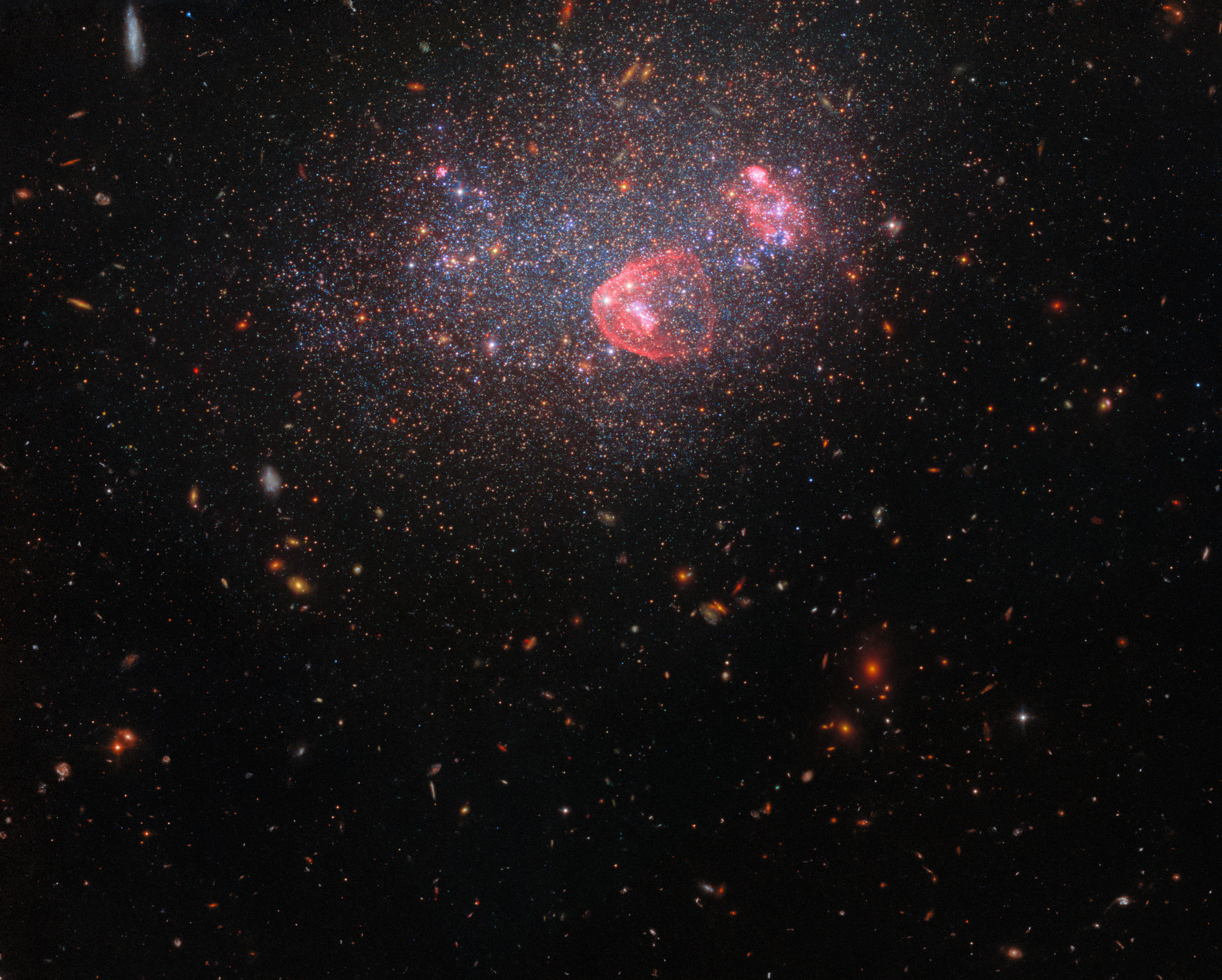NASA’s Hubble Space Telescope is back operational after a gyro glitch put it out of commission for a few days. And to help celebrate the end of the year, and the holiday season, the telescope has captured a spectacular image of what NASA calls a “holiday globe of stars.”
The new image showcases a snapshot of the dwarf irregular galaxy UGC 8091, which is lit up more than the house that belongs to the Christmas light fanatic in your hometown. NASA says that the galaxy is a collection of approximately 1 billion stars, and the interplay of energy and matter bubbles within the galaxy create what almost looks like festive string lights.
It really is a spectacular image, and one that you have to see for yourself to believe. While the early universe is believed to have been chock full of dwarf galaxies like this, NASA says that this particular galaxy featured in the new Hubble image is only seven million light-years away, and it only recently started to light up the way it now does.

Located in the constellation Virgo, UGB 8091 doesn’t feature the same orderly elliptical or spiral appearance that other galaxies do. Because of that, astronomers have deemed it an “irregular” galaxy, a class that also includes the Small and Large Magellanic clouds. These diverse galaxies range in size and shape, so you never know what you’re going to find when you peer into the cosmos.
Of course, Hubble’s image of this dwarf irregular galaxy is also a creation of the astronomers responsible for aggregating the data that the space telescope captured, and the festive colors are just an interpretation of what the infrared wavelengths might look like. Studying galaxies like this can help us better understand their composition and how they evolved.
Space telescopes like the James Webb and Hubble can peer deeper into the cosmos than we have ever been able to see before, and these images like this are just part of the spectacular pool of data that they are capable of discovering and cataloging.







